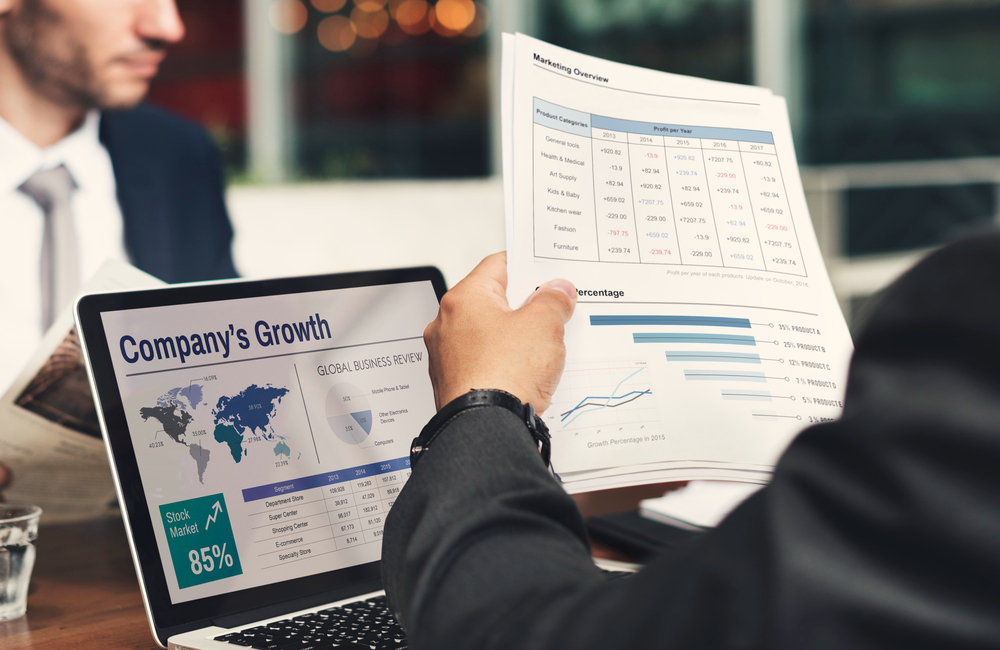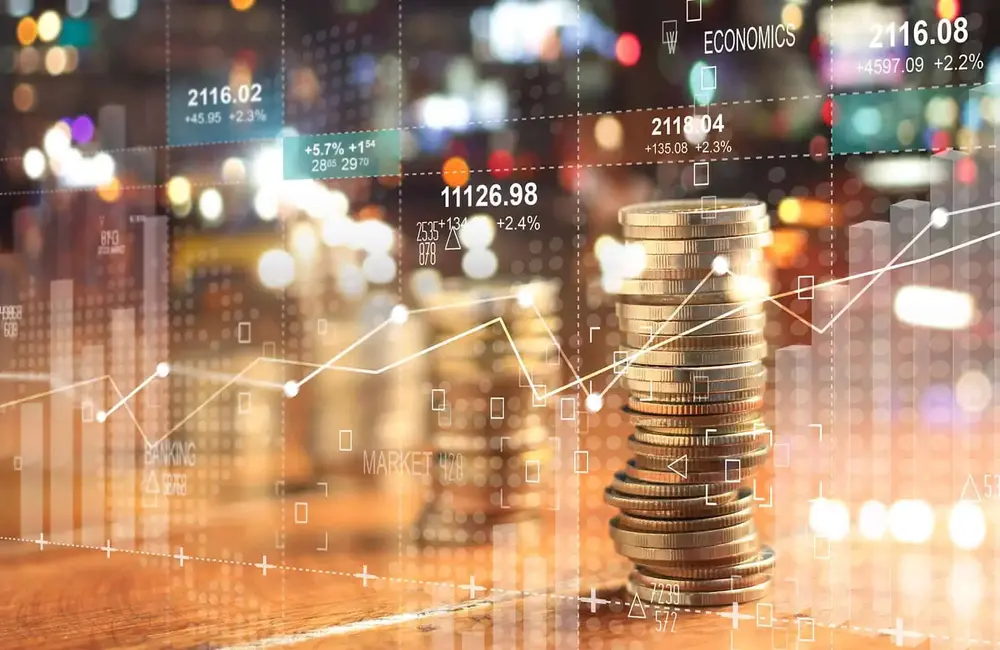ASX futures rose 48 points, or 0.7 per cent, to 6463 at 8.00 am on Wednesday, suggesting a small positive opening.
Overseas, the S&P 500 added 2.4% and every one of its 11 sectors rose. The Dow Jones Industrial Average rose 2.1%. The Nasdaq Composite Index surged 2.5 percent, helped by major advances in battered growth stocks like the data and software company Palantir Technologies and the chip maker Nvidia, both of which rose more than 4 percent. US share markets were closed overnight for a public holiday.
The market gaining risk appetite on Tuesday comes after a turbulent week in markets, which followed the Federal Reserve’s decision to approve a 0.75-percentage-point increase in interest rates, the biggest hike since 1994. Investors rushed to sell riskier assets in the face of increasing fears that central bankers would push the US economy into recession. The benchmark S&P 500 ended the week down 5.8 percent, its biggest weekly drop in more than two years.
“This still feels like a bit of a dead-cat bounce,” said Viraj Patel, global macro strategist at Vanda Research, referring to a term that describes a brief market rally. He added that investors’ willingness last week to jettison shares in some of the year’s winning sectors such as energy and utilities stock could be an indication that the drawdown has entered its late stages. Yet, he said, he felt the selloff “still has legs to go.”
The S&P/ASX 200 added 1.4% to end at 6523.8, ending a seven-day losing streak on a rebound by battered financial, commodity and real-estate stocks.
The Reserve Bank did its bit for Australian sentiment too, with governor Philip Lowe telling business leaders in Sydney the cash rate was unlikely to reach four per cent by year-end, as the market pricing suggests, or that he saw a recession coming.
Financials, which lost 15% in the previous fortnight, rose 2.65%, led by advances from lenders Commonwealth Bank, ANZ, Westpac and NAB of between 2.4% and 3.8%.
The energy sector rose 2.8% after slumping 5.2% in the previous session, while iron-ore and lithium miners also shot higher. BHP, Rio Tinto and Fortescue advanced between 1.7% and 3.5%.
Shares of gold miners dropped as gold prices softened.
The ASX 200 is nonetheless 9.5% lower for June and well on the way to a third monthly loss in a row.
Brent crude oil in commodity markets rose 0.7% to US$114.89 a barrel. Port iron ore up 3.2% to US$115.90. Gold futures dipped 0.2% to US$1835.10.
Taking direction from last week’s RBA minutes where the Governor all but ruled 0.75% out at the next board meeting in July, there was quite a reaction at the shorter end of the local bond markets. Yield on the Australian 2 Year government bonds fell to 3.1%, while 10 Year was flat at 4.06% close. Overseas, the yield on 2 yr US Treasury notes rose to 3.20%, and the yield on 10 yr US Treasury notes climbed to 3.27%.
The Australian dollar rose to 69.67 US cents, compared with 69.52 at the previous close. The Wall Street Journal Dollar Index, which measures the US dollar against 16 other currencies ticked up to 97.18.
Asia
Chinese shares ended lower, with losses among nonferrous metals stocks outweighing gains from financials. There seems to be no upward momentum in the China market, some pressure stemming from the narrowing of the US-Dollar and China bond yields, Shanxi Securities said in a note. Ganfeng Lithium lost 3.4% and China Northern Rare Earth plunged 8.3%, while China Life Insurance rose 4.2% and Postal Savings Bank climbed 2.5%. The Shanghai Composite Index fell 0.3% to 3306.72, the Shenzhen Composite Index was down 0.5% and the ChiNext Price Index declined 0.6%.
Hong Kong stocks finished higher, with the Hang Seng Index on the larger territory up 1.9% at 21559.59. Investor sentiment was lifted after futures linked to US equity benchmarks climbed, letting “the buy-the-dippers dip their toes back in the market,” Oanda senior market analyst Jeffrey Halley wrote in a note. Advances were broad-based, led by a 12% surge in Alibaba Health Information Technology. Shares of ENN Energy gained 5.6%, while Wuxi Biologics were up 5.0%. Technology stocks also gained, with the Hang Seng Tech Index finishing the day up 2.2% at 4,760.14.
The Nikkei Stock Average ended up 1.8% at 26246.31, with energy and property stocks providing support. Some support for sentiment came from a recent Nikkei survey that showed Japanese firms plan to invest 25% more in equipment, real estate and other capital spending this fiscal year. Energy stocks were the biggest gainers, following the rise in oil prices on signs of a tightening global oil market. Idemitsu Kosan gained 3.1% and ENEOS Holdings climbed 2.9%. Shares of property developers were also up. Nomura Real Estate gained 2.7% and Hulic Co. increased 3.8%.
Europe
European markets climbed as traders found a spring in their step after a US public holiday on Monday. The pan-European Stoxx Europe 600 rose 0.4% and the French CAC 40 gained 0.8%, and the German DAX added 0.2%.
“The risk-asset bounce is gathering momentum this afternoon, with US markets leading the charge in the afternoon session,” IG analyst Chris Beauchamp writes. “A lack of further big-name [central-bank] rate increases this week would have helped sentiment settle and in any case, markets had reached a washout-low last week which promised at least a short-term bounce.
London’s FTSE 100 ended up 0.4 percent as a tentative bounce in copper and other metals prices lifted the basic resources sector, with stocks like Antofagasta and Rio Tinto performing well. The day’s top performer was DS Smith, which closed 3.7% higher, followed by Avast, which gained 3.2%, Antofagasta, which closed up 3%, and Fresnillo, which added 2.7%.
North America
US stocks climbed Tuesday after their worst week since March 2020, providing investors a respite from a recent period of whipsaw trading that has driven stocks and crypto diving.
The S&P 500 rose 2.4% and all 11 sectors advanced. The Dow Jones Industrial Average rose 2.1%. The Nasdaq Composite Index added 2.5%, helped by large gains at battered growth stocks like the data and software company Palantir Technologies and the chip maker Nvidia, whose shares each rose more than 4 percent.
Bitcoin climbed along with other cryptocurrencies, continuing to recover from a battered weekend. Bitcoin was up at $20,836.15, a 1.9% gain over its value of 5 p.m. ET Monday, and some 18% above a recent low of $17,601.58 from Saturday, according to CoinDesk data.
The appetite for riskier assets on Tuesday comes after a rocky week in the markets, which was set off by the Federal Reserve’s approval of a 0.75-percentage-point increase to interest rates, its biggest hike since 1994. Investors rushed to shed riskier assets as fear mounts that central bankers will ram the US economy into a recession. The benchmark S&P 500 closed the week down 5.8 percent, its biggest one-week drop in over two years.
Elsewhere, investors will be looking for more commentary from Federal Reserve Chairman Jerome Powell as he testifies in front of Congress on Wednesday and Thursday.
“What investors will be looking for is any hint about whether Chair Powell’s promise for one more 0.75 percentage point rate hike is actionable,” said Michael Farr, president of Farr, Miller & Washington.
Investors and policy makers alike are keen to see the June print for consumer inflation expectations, due Friday. Mr. Powell said at his news conference last week that the preliminary reading of 5.4 percent was “eye catching.”
“Markets will be watching for the final read of consumer inflation expectations in the University of Michigan survey. They want to get a sense of how aggressive the Fed is going to need to be,” said Rob Haworth, senior investment strategist at US Bank Wealth Management. “If expectations are no longer increasing, markets may interpret that as Fed policy beginning to have an effect.”
Investors and analysts say they anticipate more pain in the markets going forward, though some are still willing to wade in and pick up stocks at a discount after a selloff that has pulled the S&P 500 down 21% so far this year. Many referred to Tuesday’s recovery as a bounce off last week’s drawdown.
“This still feels like a little bit of a dead-cat bounce,” said Viraj Patel, a global macro strategist at Vanda Research, using a term for a temporary market rally. He pointed out investors’ propensity last week to ditch shares of winning sectors this year, including the energy and utilities stocks, may be an indication that this year’s pullback has moved into its later stages. Yet he said that he believes the selloff “still has legs to go.”
The bullish spirit on Tuesday coincided with a selloff in US government bonds that pushed the yield on the 10-year US Treasury note higher. The yield on the 10-year note rose to 3.304% from 3.238% on Friday. Bond prices move in the opposite direction of yields.
In recent days, government leaders and officials have sought to reassure an increasingly jittery nation that an economic slowdown isn’t a foregone conclusion. President Biden said Monday that he had spoken to Lawrence Summers, a former Treasury secretary, and reiterated that he did not believe a recession was inevitable. James Bullard, president of the Federal Reserve Bank of St. Louis, also said the economy seems to be on course for further expansion this year.
Even so, many market watchers are preparing for an economic slowdown. In a note on Monday, a team of Goldman Sachs economists raised their forecast for a US recession, pointing to fears that the Fed will be pressured to act aggressively in response to inflation data, no matter how soft economic activity becomes. The team now sees a 30% chance of slipping into a recession over the next year, up from 15%, and a 25% chance of entering a recession in the second year if one is avoided in the first.
Energy stocks outperformed the others. Diamondback Energy climbed $9.99, or 8.2 percent, to $132.28. ExxonMobil rose $5.36, or 6.2 percent, to $91.48.
Brent crude, the global standard, advanced for a second day, adding 0.5 percent to $114.65 a barrel. Oil prices dipped last week on fears a potential recession would weigh on energy demand.
Seema Shah, chief strategist at Principal Global Investors, said that for now, investors might find opportunity in companies whose shares have been badly hit this year. But she said she expects the market to decline more once investors start to see persistent drops in earnings growth.
“I think what you might see is a [modest] rally through the summer... and as you move into the autumn months and the next earnings season, I think a lot of this economic data is going to start to turn and the earnings growth is going to start to turn,” she said. Even so, she said, even now, “sentiment is deteriorating very rapidly.”

























